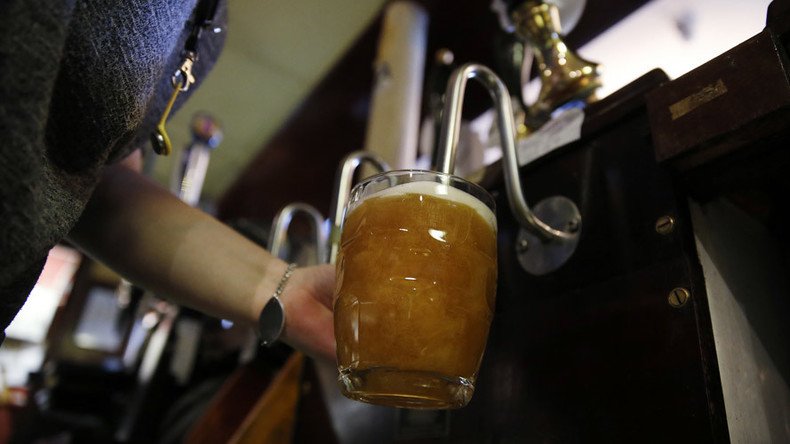Most alcohol industry profits come from problem drinkers - studies

Alcohol industry giants like Diageo, Anheuser-Busch InBev, and MillerCoors claim they promote responsible drinking, but a new study from the UK reveals the "dirty little secret" that most of their profits come from "harmful" and "hazardous" customers.
Of the estimated £37.8 billion ($54bn) profit reaped by English alcohol sales in 2013, £23.7 billion came from what health professionals call "harmful" and "hazardous" drinkers who risk their health and cause lethal damage, according to the Guardian.
READ MORE: Violent mayhem: Boozy Brits celebrate 'Mad Friday'
“Hazardous” drinkers consume more than 14 'units' per week, equal to about seven pints, whereas "harmful", or "risky", drinkers consume more than 50 units per week for men, or 35 for women.
This can lead to liver problems, cancer, and anti-social problems like domestic abuse, drunk driving, and other forms of violence.
Looking at data from the Health Survey for England, researchers from Southampton University were able to calculate how this translates in financial terms, concluding that £14.4 billion ($20bn) worth of sales came from "hazardous" drinkers and £9.3 billion ($13bn) from "harmful" drinkers.
Official figures from England's Health & Social Care Information Centre show the fatal repercussions of consumption are 6,592 alcohol-related deaths in 2013, a ten percent increase in just ten years.
This echoes a new report from Australia this week which was also shows the alcohol industry’s heavy reliance on risky drinkers.
The morning after: Australia opens first hangover clinic https://t.co/vqqZlIQSxwpic.twitter.com/oqnIFNOa2C
— RT (@RT_com) December 13, 2015
Australia’s main consumers of alcohol represent just 20 percent of the population, but account for over 74 percent of all the alcohol consumed each year.
The findings demonstrate that if this 20 percent reduced their consumption to within the guidelines, the total alcohol consumed in Australia would decrease by 39 percent.
"The alcohol industry is totally dependent on risky drinking," Michael Thorn, CEO of the Foundation for Alcohol Research & Education, said. "This is its dirty little secret. It’s an industry built on identifying, targeting and exploiting its best customers."
Drink to good health? Alcohol-related hospital admissions up 50% https://t.co/ewTvCyzxAnpic.twitter.com/21K1d21YQ1
— RT (@RT_com) December 23, 2015
In Ireland, where the famous Guinness Storehouse has become "Europe's leading tourist attraction", almost €7 billion was spent buying alcohol in 2012 while the following year, a shocking 54 percent of drinkers between the ages of 18 and 75 were classified as "harmful".
The health system is becoming an increasing burden for the Irish government as a result, with alcohol-related illness or injury estimated to cost the state €3.7 billion ($4bn) annually.
Up until last year, Diageo’s Irish chief served on the board of the 'Stop Out-of-Control Drinking' campaign before he was pressured to step down for conflict of interest.
The campaign was criticized for its ad targeting victims of sexual abuse by the Rape Crisis Network of Ireland, describing it as "sinister, harmful, regressive, and hurtful".
POLL: Is the Stop Out-of-Control Drinking campaign guilty of misogyny for this ad, asks @ghookhttp://t.co/YBWGgsngsypic.twitter.com/jr5m5qDPC1
— Newstalk 106-108fm (@NewstalkFM) March 12, 2015
Diageo has also been criticized for trying to avoid higher taxes in countries like the UK, where the revenue could be used by the National Health Service for alcoholism treatment.












